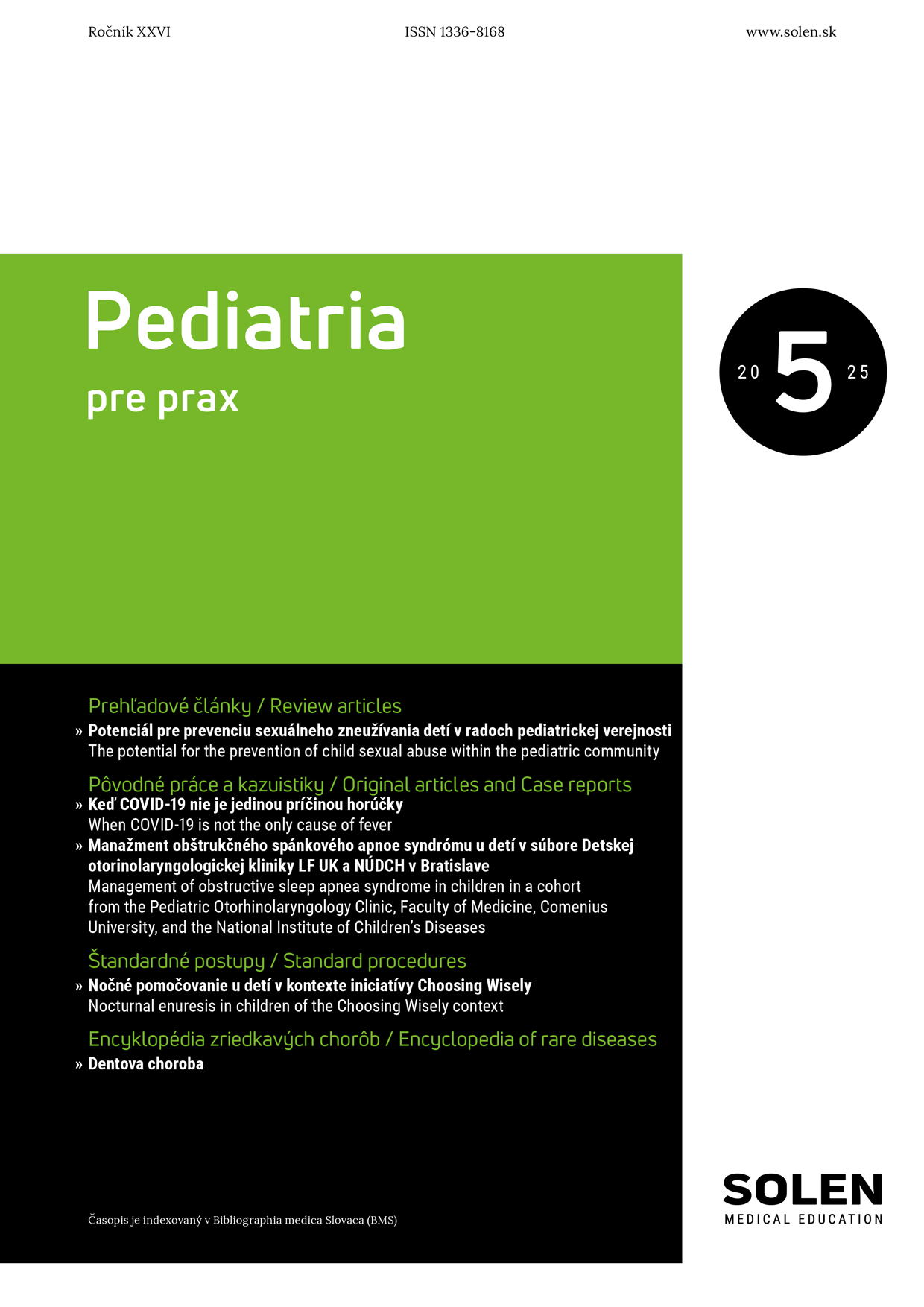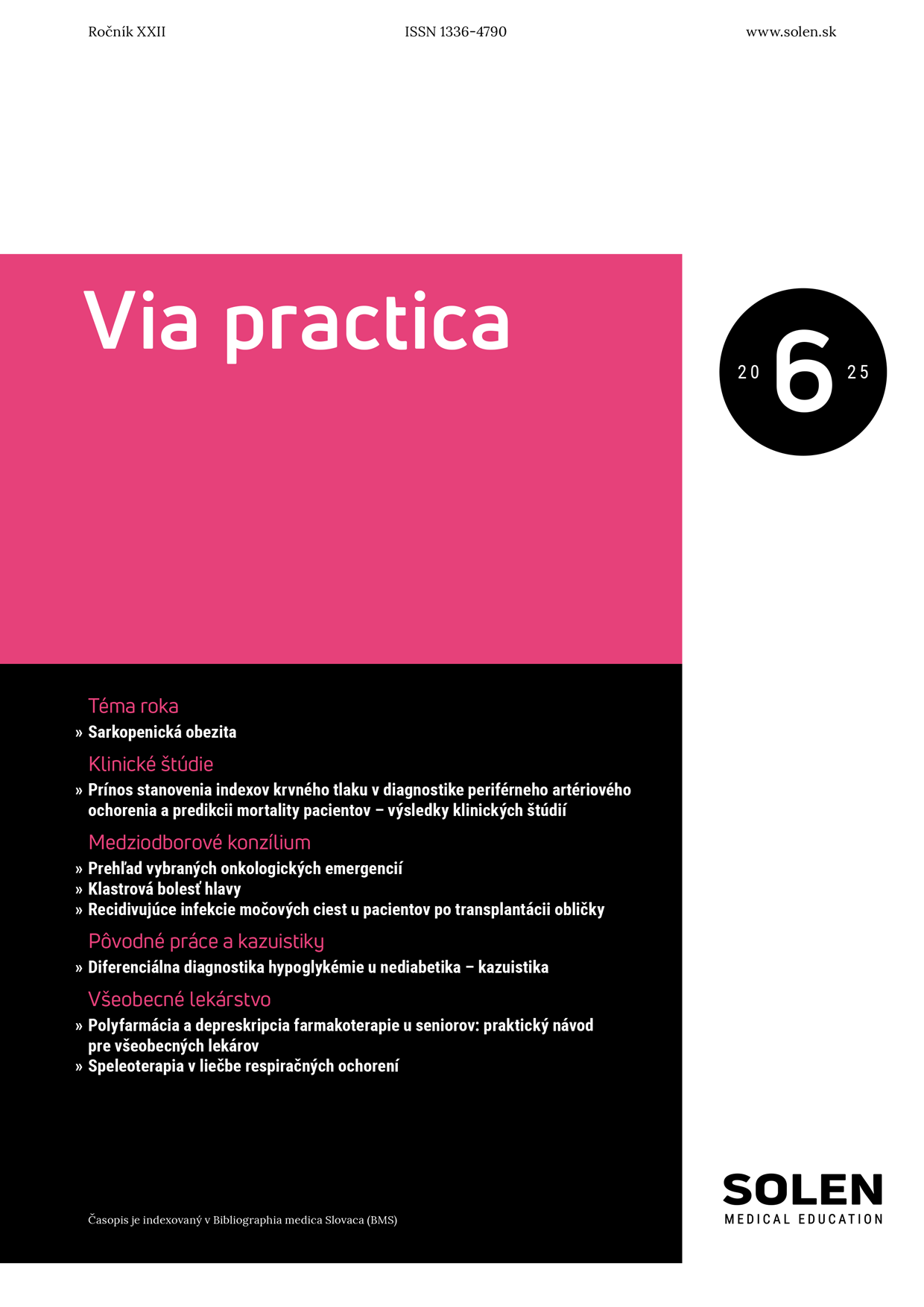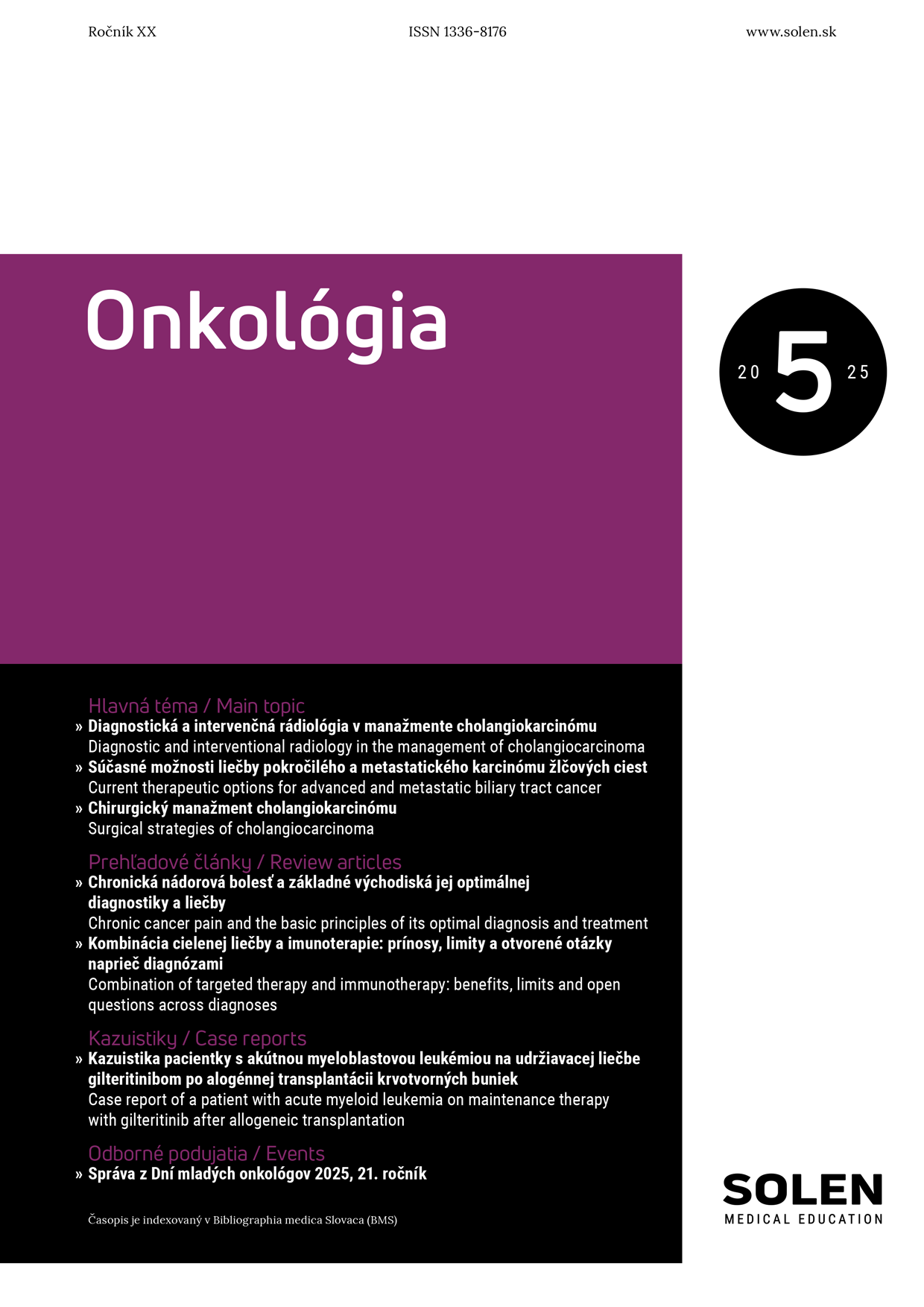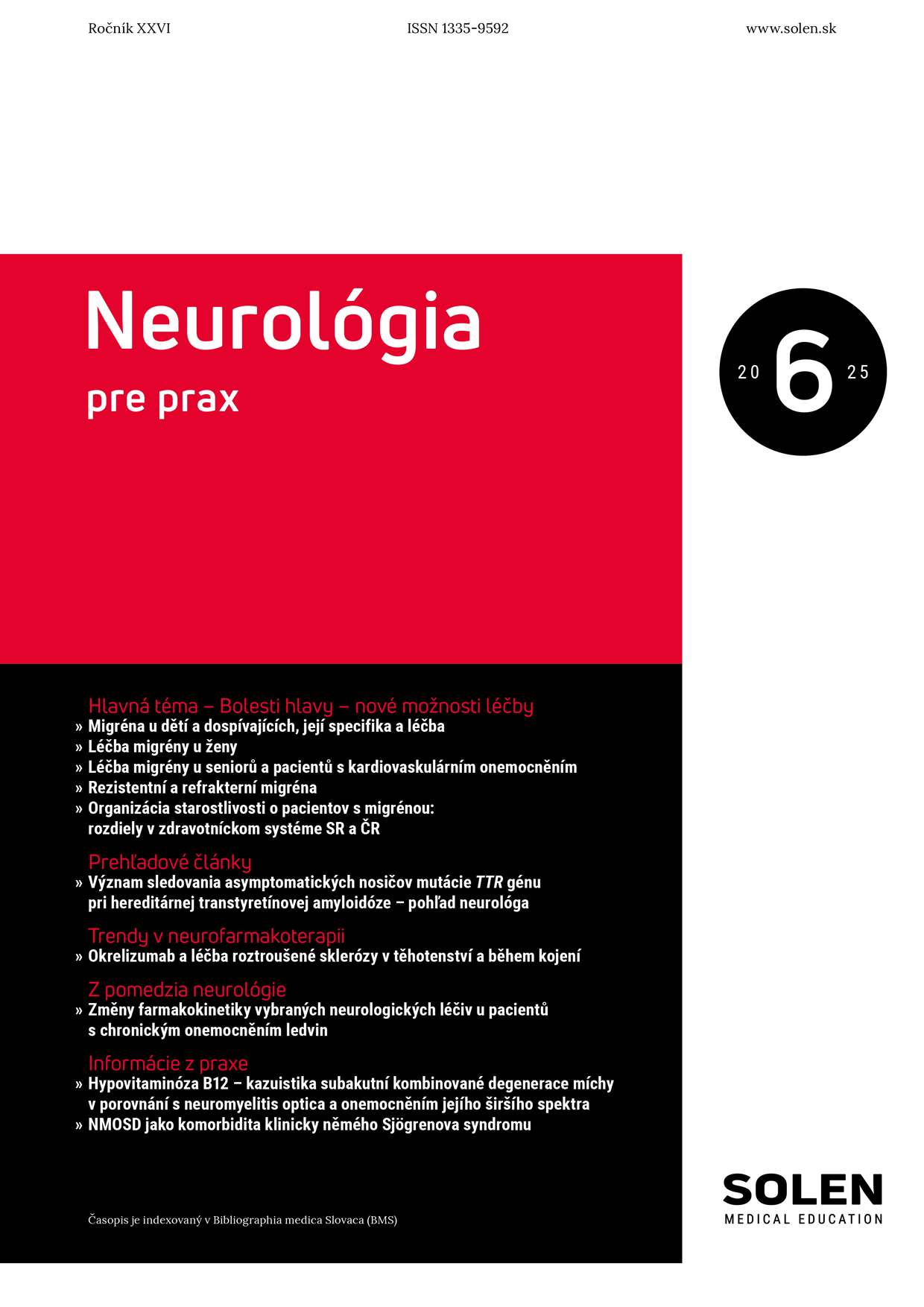Dermatológia pre prax 3/2020
Analýza diagnostiky a liečby tineí u detí – tinea incognita (atypica)
doc. MUDr. Tibor Danilla, CSc., MUDr. Adela Vrtíková
Úvod: Dermatofytózy (tinea) majú typické klinické prejavy. Vplyvom vlastností vyvolávateľa, osobitostí postihnutého a neodbornými zásahmi v liečbe pozorujeme často atypické obrazy nazývané tinea incognita (atypica). Cieľom práce je poukázať na stav diagnostiky a liečby tineí u detí, dôležitosť stanovenia etiologickej diagnózy, ktorá určí antimykotickú liečbu. Tým sa predíde antimikrobiálnej a protizápalovej hormonálnej liečbe, ktoré sú neúčinné a najvýraznejšie menia typický klinický obraz tineí. Metódy a súbor pacientov: Použili sme metódu analýzy údajov z chorobopisov hospitalizovaných detí v rokoch 2015 – 2019 pre tineu. V súbore bolo 89 detí, 33 chlapcov a 56 dievčat. Najčastejšie boli deti hospitalizované pre diagnózu tinea corporis samostatne a v kombinácii s inými lokalitami. Časté bolo aj postihnutie kapilícia. Výsledky: Typické klinické prejavy sme zistili v 40,45 percentách. Z netypických prejavov sme najčastejšie zistili intenzívnejšie zápalové zmeny (23,6 %). Zmeny v zmysle početných papuliek a pustuliek sme zistili v 14,61 %, ploché menej infiltrované ložiská v 11,24 %, rýchle šírenie sme zaznamenali v 10,24 %. Výskyt atopie sme zistili u postihnutých aj v rodinách zhodne v 52,81 percentách. Raz sme zistili postihnutie oboch rodičov. Výskyt psoriázy sme zistili 5-krát. Postihnutie rodičov tineou sme zaznamenali iba 3-krát a súrodencov 9-krát. Zistili sme, že do troch týždňov od začatia choroby bolo hospitalizovaných 36 detí a do 5 týždňov až 66 detí, to je až 74,16 percent z celého súboru. Pred hospitalizáciou nebolo liečených iba 23 (25,84 %) pacientov. Až 74,16 % detí bolo liečených pediatrom, dermatovenerológom alebo oboma. Na liečbu boli použité liečivá s antimykotickými u 55,06 %, s antimikrobiálnymi účinkami u 39,33 %, kortikoidy a ich kombinácie u 46,07 % a rôzne liečivá s nehormonálnymi protizápalovými a antiseptickými účinkami u 44,94 %. Systémové antibiotiká boli ordinované 16-krát, antimykotiká 13-krát, antihistaminiká 13-krát a isoprinosin 1-krát. Spolu bolo zaznamenaných 208 druhov liečiv. Mikroskopické mykologické vyšetrenie bolo urobené u každého hospitalizovaného. Zlyhalo iba 2-krát. Kultivačné vyšetrenie sa urobilo u 76 chorých. 13-krát bola kultivácia urobená obvodným dermatovenerológom. Najčastejšie sa izoloval druh Trichophyton mentagrophytes (granulosum) nasledovaný Microsporum canis. Najčastejšie bol uvedený kontakt s mačkou, nasledovali morča, pes. Záver: Pri diagnostikovaní tineí je dôležitá anamnéza, podrobné klinické vyšetrenie. Mimoriadny význam má mykologické vyšetrenie na potvrdenie diagnózy a tomu príslušnej liečby. Deti s atopiou sú asi náchylnejšie na získanie tiney. Príčiny zlyhania ambulantnej liečby antimykotikami si vyžadujú širšiu štúdiu.
Kľúčové slová: tinea u detí, tinea atypica, atopia, polypragmázia, mykologické vyšetrenie
Analysis of diagnosis and treatment of tinea in children - Tinea incognita (atypica)
Purpose: Dermatophytosis (tinea) has typical clinical manifestations. Due to the characteristics of the causative agent, the peculiarities of the affected person and unprofessional interventions in the treatment, we often observe atypical images called tinea incognita (atypica). The aim of the work is to point out the state of diagnosis and treatment of tinea in children, the importance of determining the etiological diagnosis, which will determine antifungal treatment. This avoids antimicrobial and anti-inflammatory hormonal treatments, which are ineffective and most significantly alter the typical clinical picture. Methods and patients: We used the method of analysis of data from medical records of hospitalized children in the years 2015 - 2019 for tinea. There were 89 children, 33 boys and 56 girls in the group. Most often, children were hospitalized for the diagnosis of tinea corporis alone and in combination with other localities. Scalp involvement was also common. Results: We found typical clinical manifestations in 40.45 percent. Of the atypical manifestations, we most often found more intense inflammatory changes (23.6%). We found changes in terms of numerous papules and pustules in 14.61%, flat less infiltrated deposits in 11.24%, we recorded rapid spread in 10.24% affected. We found the occurence of atopy in the affected and their families in the same way in 52.81 percent. We once found out that both parents were affected. We detected the occurrence of psoriasis 5 times. We noticed tinea of parents only 3 times and siblings 9 times. We found that 36 children were hospitalized within 3 weeks and up to 66 children within 5 weeks, which is up to 74.16 percent of the whole group. Only 23 (25.84%) patients were not treated before hospitalization. As many as 74.16% of children were treated by a pediatrician, dermatovenerologist, or both. Drugs with antifungal effects in 55.06%, with antimicrobial effects in 39.33%, corticoids and their combinations in 46.07%, and various drugs with non-hormonal anti-inflammatory and disinfectant effects in 44.94% were used for treatment. Systemic antibiotics were prescribed 16 times, antifungals 13 times, antihistamines 13 times and Isoprinosin 1 time. A total of 208 types of drugs were recorded. Microscopic mycological examination was performed on each hospitalized patient. It failed only 2 times. Culture examination was performed in 76 patients. 13 times the cultivation was done by a district dermatovenerologist. The most frequently isolated species was Trichophyton mentagrophytes (granulosum) followed by Microsporum canis. Contact with a cat was most often mentioned, followed by a guinea pig and a dog. Conclusion: In the diagnosis of tinea, a history, detailed clinical examination is important. Mycological examination is of particular importance to confirm the diagnosis and the corresponding treatment. Children with atopy are probably more prone to getting tinea. The causes of failure of outpatient antifungal therapy require a broader study.
Keywords: tinea in children, tinea atypica, atopy, polypragmasia, mycological examination

















